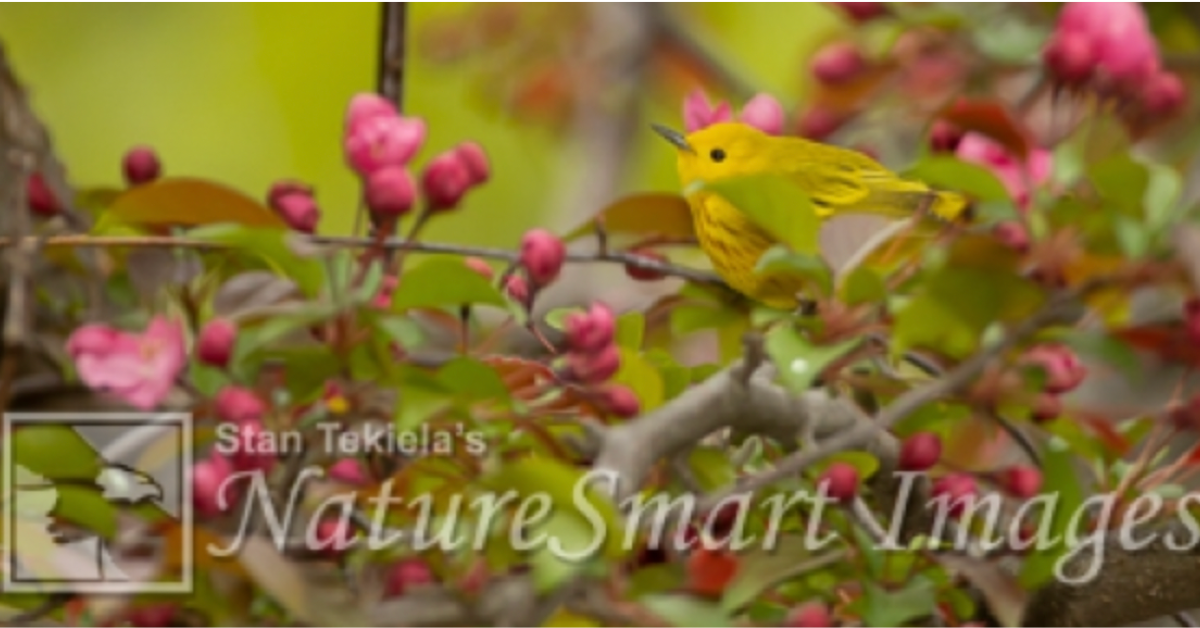
Stan Tekiela Observes a Yellow Warbler Family
Sitting alone in a small dark blind, waiting for a bird, is a beautiful time to reflect or think deeply about all the wonderful and unique aspects of nature. This is what happened when I was sitting in one of my ground blinds that I set up to photograph a tiny and delicate yellow bird, the Yellow Warbler (Setophaga petechia).
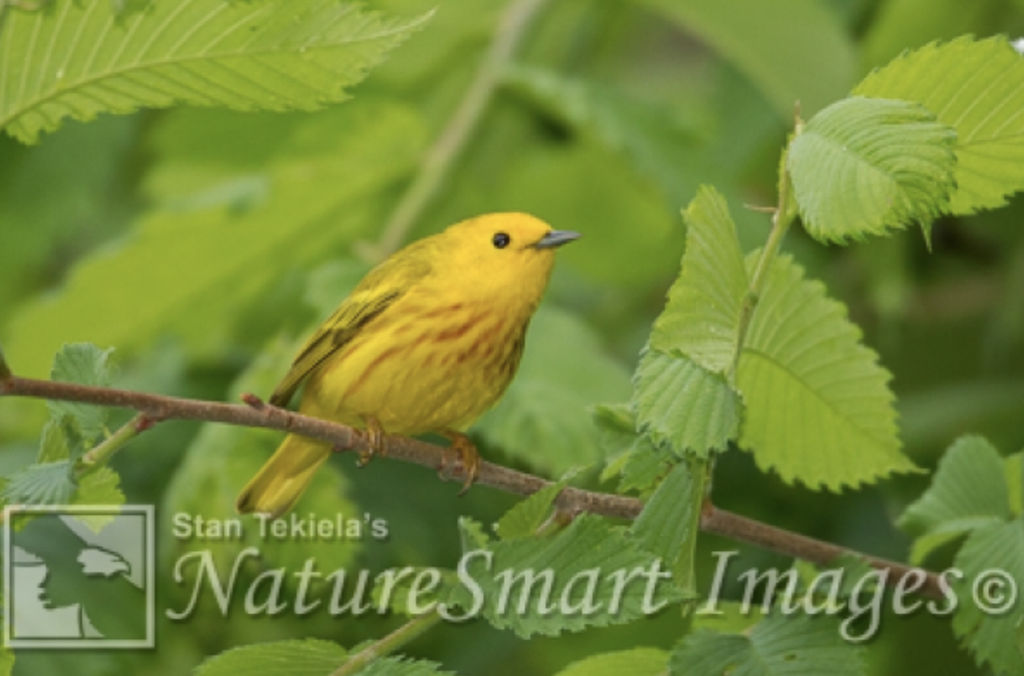
A week before, while taking a walk (exercising), I saw a small yet familiar bird building a nest in a low shrub. I took note of the location and stopped back a couple days later only to find that the nest these warblers had started was gone. There was no sign of it at all. I assume that a raccoon tore it down or heavy rains stripped it from the branches. Knowing that this is a fairly common occurrence, I didn’t worry too much and started looking around the area for another nest. It didn’t take long, and I located the new nest location.
It was in a perfect spot for me to take photographs, slightly downhill from an open flat spot where I could set up my photo blind. I quickly set up my blind to not disturb or upset the pair as they were busy bringing in nesting material. The female does most of the nest building. I could see that most of the nest was complete; therefore, I knew egg laying would soon occur.
A few days later, I stopped to check on the progress of the Yellow Warbler family and found four tiny eggs in the nest. The female was incubating the eggs. I slipped into my blind and watched as the male brought food to the female. This kind of behavior is not well known or well documented. Usually, the female would leave the nest to find food for herself. This would allow her to exercise her wings and defecate away from the nest. But with this pair, the male was actively feeding the female in the nest.
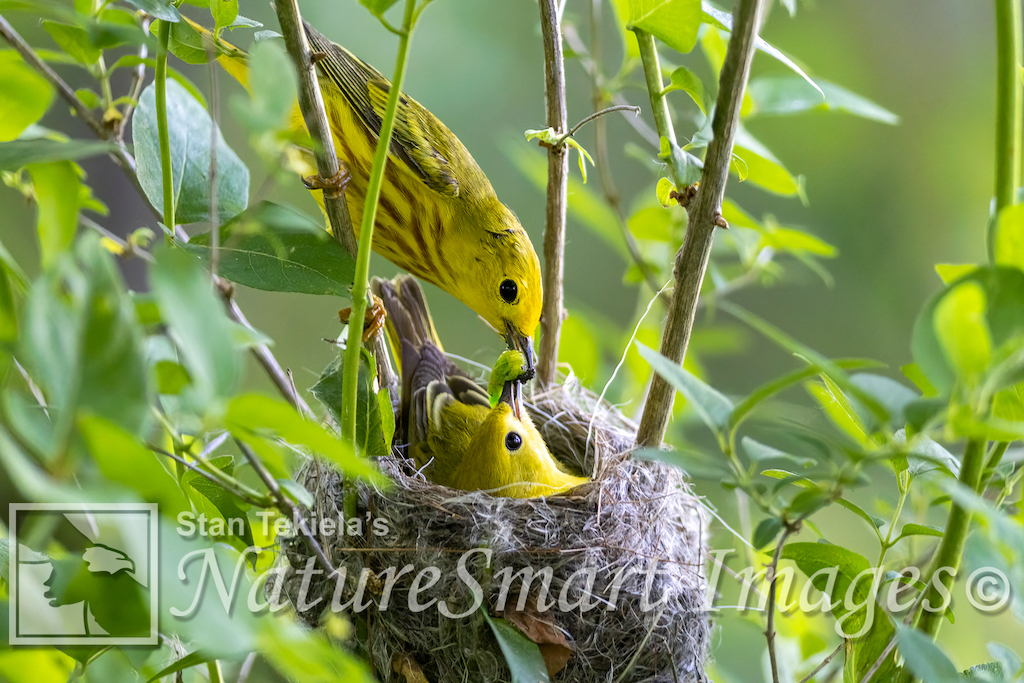
The Yellow Warbler is one of the most common and widespread of the New World Warblers. They nest in nearly the entirety of the United States. They winter in the Caribbean, Central America, and upper parts of South America. They build a small cup nest weaved of thin, strong plant fibers. Most nests are built about 3 to 5 feet above the ground.
It wasn’t long before the eggs hatched, and four super tiny, naked, blind baby birds lay in the bottom of the nest. The female spent many hours sitting on the newly hatched birds to keep them warm. The male was busy bringing in small insect meals for the chicks. Yellow Warblers eat a lot of tiny caterpillars. Over half of their diet is made up of caterpillars. This is interesting because their Genus name Setophaga is Greek and breaks down to ses (“moth”) and phagos (“eating”). So they are moth eaters in both the caterpillar stage and also the adult moth stage.
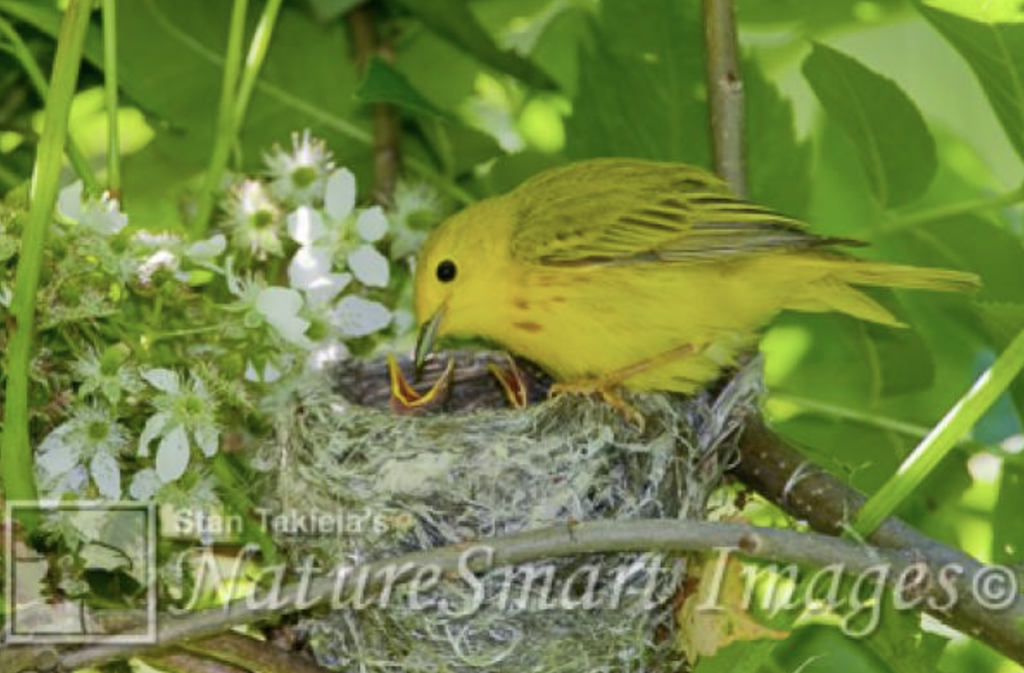
The clutch of eggs is usually 3-6, typically 4-5. It takes only 11-14 days for the eggs to hatch, which is incredibly quick. The newly hatched nestlings proliferate and are ready to leave the nest in 11-12 days. This means that, in less than 2 weeks, the baby bird goes from being naked, eyes still closed, and unable to care for itself to being able to fly and follow its parents around. Truly amazing.
The parents feed the young even after they leave the nest. The young birds flit around, and the parents find them to deliver insect meals. Only 3 to 4 weeks after hatching, the young Yellow Warblers are entirely on their own. And you thought you had a rough childhood!
At only one year of age, Yellow Warblers are sexually mature and start to breed. They are highly migratory, moving out of most of the states at the end of summer and spending their winters in warmer climates of the Caribbean and Central America.
Fortunately, the adults and young return to the area where they were hatched. When they return, they will search for a mate and an open territory to start the process all over again. I am hoping to find them nesting again next year.
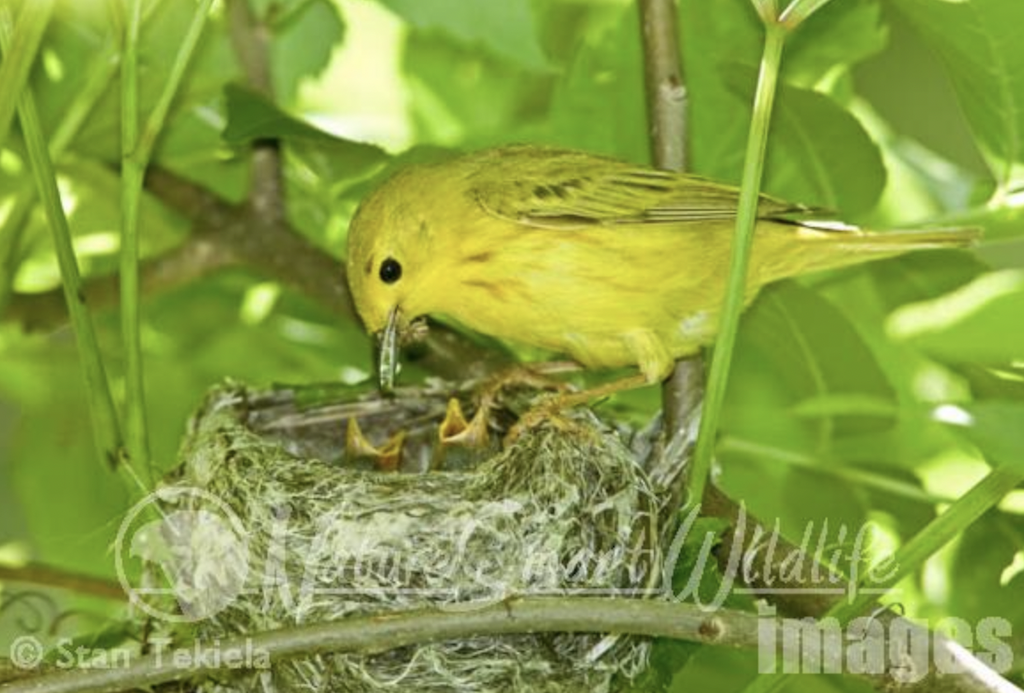
If you enjoyed Stan’s post, you might like one of his excellent nature books: Wild Birds, Backyard Birds: Welcomed Guests at our Gardens and Feeders, and Bald Eagles: The Ultimate Raptors.
You can follow Stan on Facebook and Twitter or contact him via his web page. Stan’s nationally syndicated NatureSmart column appears in more than 25 cities spanning 5 states (Minnesota, Wisconsin, Michigan, Illinois, and Pennsylvania) and is circulated to more than 750,000 readers.
For more stories about wildlife and nature, sign up for our newsletter now!


